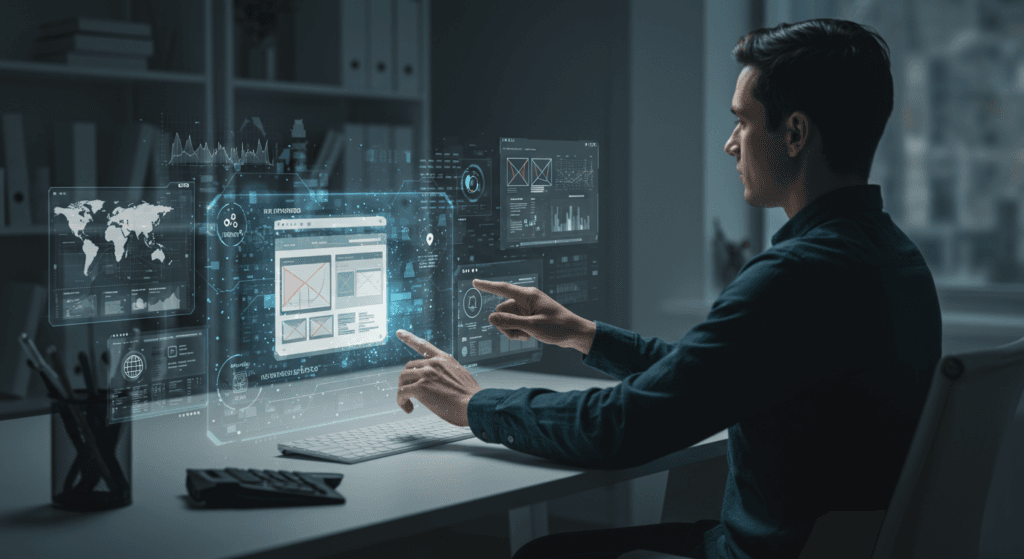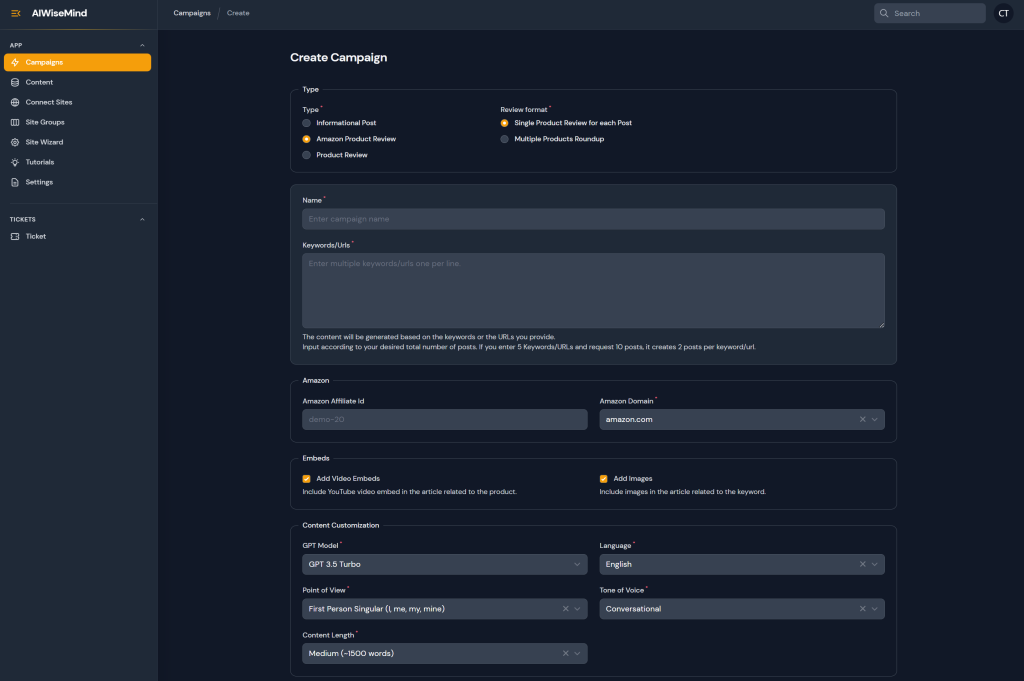Feeling overwhelmed by the ever-growing demands of the digital world? Whether you’re a small business owner, a content creator, a marketer, or an affiliate writer, you’re likely juggling multiple tasks, from crafting compelling content to building engaging websites.
But what if you had a creative copilot to help you navigate the complexities of the online world? Enter Artificial Intelligence (AI).
AI isn’t just a futuristic fantasy; it’s a practical tool that can revolutionize the way you work. Imagine effortlessly creating stunning websites, generating captivating content, and optimizing your online presence, all with the help of intelligent AI tools. Revolutionize your workflow with our Ultimate Guide to AI-Powered Programming.
Stay tuned as we explore how AI can empower you to build amazing websites and unlock your full creative potential.
What Exactly Can AI Do For You?
AI is like having a multi-talented team member who can handle a variety of tasks, freeing you up to focus on what you do best. Here are just a few ways AI can make your life easier:
- Website Creation Made Easy: AI-powered website builders can generate entire websites in minutes, complete with layouts, images, and copy. No coding or design skills required!
- Content Creation on Autopilot: AI writing assistants can help you generate ideas, write different kinds of creative text formats, and even create compelling marketing copy. Say goodbye to writer’s block!
- Design Like a Pro: AI design tools can help you create stunning visuals, select perfect color palettes, and optimize images for peak performance.
- Personalized Experiences: AI can help you tailor your website content and design to each visitor’s preferences, creating a truly engaging experience.
- Data-Driven Decisions: AI can analyze your website data to identify trends, understand user behavior, and make informed decisions to improve your online strategy.
AI in Action: Real-World Examples
Let’s see how AI is making a difference for people just like you:
- The Budding Blogger: Imagine a travel blogger who wants to create a stunning website to showcase their adventures. Using an AI website builder, they can quickly generate a professional-looking website with a captivating design and personalized content recommendations. Learn more about integrating AI into WordPress in our guide on Adding AI to Your WordPress Website.
- The E-commerce Entrepreneur: An online store owner can use AI to optimize product images, personalize product recommendations, and even automate customer service with AI-powered chatbots.
- The Marketing Maestro: A marketing manager can leverage AI to analyze campaign performance, personalize email campaigns, and generate targeted ads that reach the right audience.
Unveiling the Power of AI: A Deeper Dive into its Applications
Let’s explore some specific applications of AI that can revolutionize your online presence:
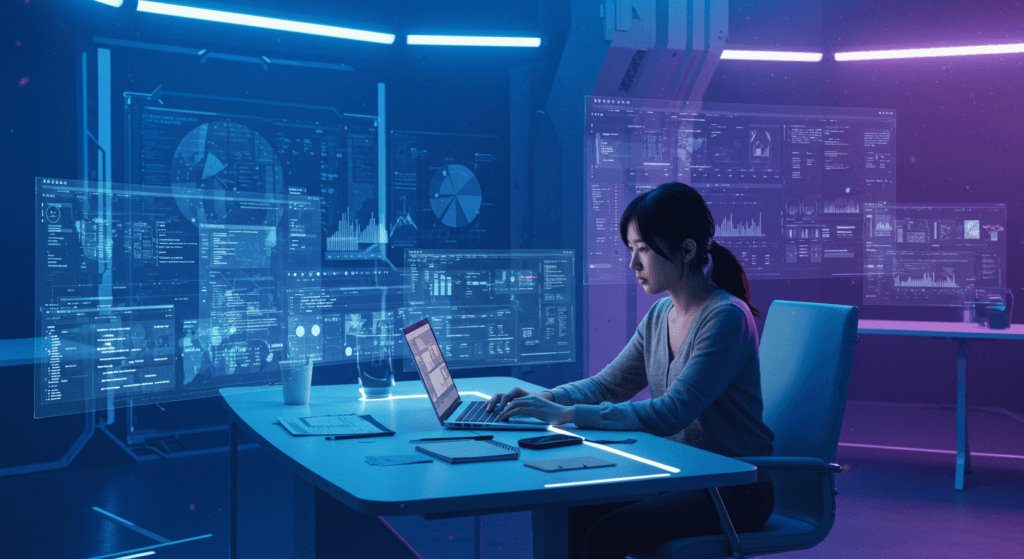
1. AI-Powered Website Builders
Imagine creating a professional-looking website in a matter of minutes, simply by answering a few questions and providing some basic information. This is the reality offered by AI-powered website builders like Wix ADI, Durable, and Framer. These platforms leverage artificial intelligence to generate website layouts, suggest relevant content, and even create entire websites from scratch.
Wix ADI (Artificial Design Intelligence), for example, gathers information about your website’s purpose, desired features, and preferred style through a series of questions. Based on your input, Wix ADI automatically generates a unique website design, complete with images, text, and a tailored layout. This empowers users with little to no design experience to create professional websites quickly and easily.
Durable, another AI-powered website builder, takes efficiency a step further by generating websites in mere seconds. It uses AI to create compelling copy, generate relevant images, and select a design that aligns with your specific needs.
Framer, on the other hand, focuses on the user experience aspect of web design. It allows you to create interactive prototypes and websites with AI assistance, making it easier to design engaging and user-friendly interfaces.
CodeDesign is another notable AI-powered website builder that simplifies the design process for beginners. It offers a user-friendly drag-and-drop interface and AI-guided assistance, making it easy to create a professional-looking website without any coding or design experience. CodeDesign also allows you to publish and host your website directly on their platform, streamlining the entire process from creation to launch.
Even creating unique website graphics is made easier with AI tools like AutoDraw.
This innovative tool, a Google project, allows you to create freehand drawings and then uses AI to transform them into refined images with icons and predrawn designs. This can be a great way to add a personal touch to your website and create visuals that align with your brand identity.
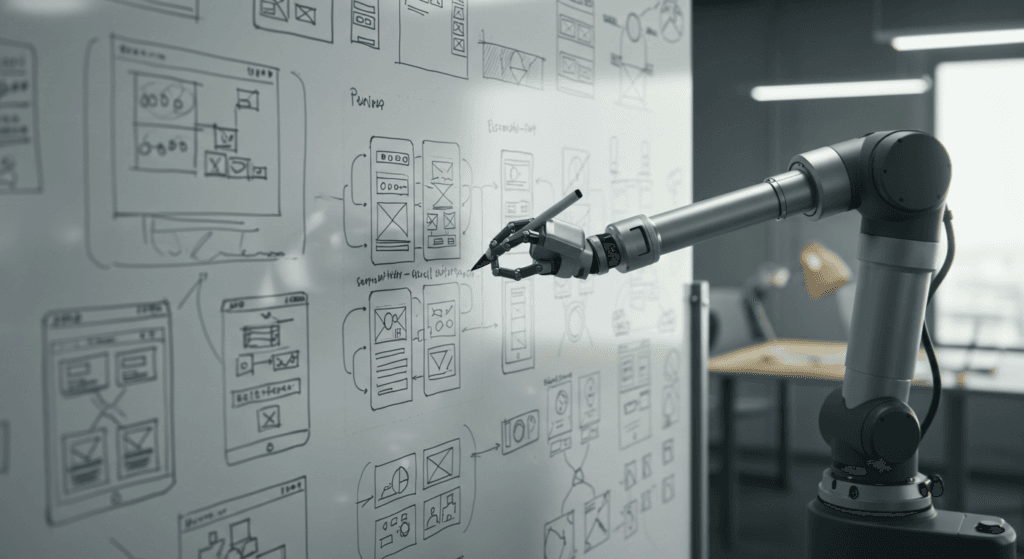
2. AI-Powered Wireframing
Wireframing, the process of creating a skeletal framework for a website’s layout and functionality, is a crucial step in web design. AI is now being used to automate and enhance this process, making it faster, more efficient, and more collaborative.
ClickUp’s AI Website Wireframe Generator, for instance, allows you to create wireframes by simply describing your needs or providing a basic sketch. The AI then generates a wireframe that outlines the layout, navigation, and key elements of the website. This can save designers significant time and effort, allowing them to focus on the creative aspects of the design process.
UXPilot.ai offers another approach to AI-powered wireframing. It integrates with Figma, a popular design tool, and allows you to generate wireframes directly within the platform. UXPilot.ai also allows you to “chat” with your designs, providing feedback and making changes through natural language. This makes the wireframing process more interactive and intuitive. Moreover, UXPilot.ai enables you to generate screen flows and visualize complete product flows in minutes, streamlining the entire UX design process.
Jeda.ai’s Generative AI Wireframe tool focuses on collaborative design. It allows teams to work together in real-time, generating and editing wireframes with AI assistance. This can improve communication and efficiency within design teams.
SiteForge is another AI-powered platform designed specifically for marketing agencies and teams. It focuses on generating wireframes and content while maintaining consistent brand messaging across all projects. SiteForge also helps scale content creation, allowing teams to handle a higher volume of clients without compromising quality.
Bridging the gap between traditional design methods and digital interfaces are tools like Visily and UIzard. These AI-powered tools can turn analog drawings or wireframes into editable objects, allowing designers to seamlessly transition from sketching on paper to creating digital mockups.
3. AI for Color Palette Selection and Image Optimization
Aesthetics are a critical aspect of web design, and AI is now being used to enhance both color selection and image optimization, ensuring visually appealing and high-performing websites.
AI-Powered Color Palette Generators
Choosing the right color palette can significantly impact the look and feel of a website, influencing user emotions and brand perception. AI-powered color palette generators can help designers find the perfect color combinations for their projects.
Tools like Khroma and Adobe Color CC use AI to analyze images and generate color palettes based on the dominant hues and color relationships. This can be a great way to find inspiration and create harmonious color schemes that evoke the desired mood and aesthetic.
Muzli AI Color Combination Generator takes a different approach, allowing you to generate color palettes based on text input. By entering a word or phrase, designers can create palettes that visually translate their ideas and concepts. This can be particularly useful for capturing the essence of a brand or the theme of a website.
ColorMagic is another AI-powered tool that generates color palettes based on keywords. It offers a wide array of options, from retro styles to modern and vibrant palettes, catering to diverse design preferences.
AI Colors Interpreter adds another dimension to color selection by analyzing images and providing insights into the colors and their significance. This tool can help designers understand the emotional impact of different color choices and make informed decisions about the color palettes they use.
PaletteMaker, an AI-powered color palette generator, allows you to create and test color palettes in pre-made design examples. This tool is particularly useful for seeing how different color schemes work in various design contexts, such as logos, UI/UX elements, patterns, and posters.
Furthermore, AI color palette tools can suggest complementary or analogous colors based on uploaded images or visual inspiration. For example, if you upload an image of a nature scene, the AI tool can generate a palette based on the colors found in the image, ensuring a harmonious and visually appealing design.
AI-Powered Image Optimization
Images are an essential part of web design, but they can also significantly impact website performance. Large image files can slow down loading times, leading to a poor user experience and negatively affecting SEO. AI-powered image optimization tools can help address this issue.
Tools like Kraken.io, Optimole, and TinyPNG use AI to compress images without sacrificing quality. They can automatically resize images, optimize file formats, and remove unnecessary metadata, resulting in smaller file sizes and faster loading times.
By reducing image size and improving quality, these tools contribute to overall website optimization and improve SERP performance.
Some AI image optimization tools also offer advanced features like image enhancement and upscaling. For example, Let’s Enhance is an AI-powered image editor that increases image resolution without losing quality. This can be used to improve the quality of existing images, making them sharper and more visually appealing.
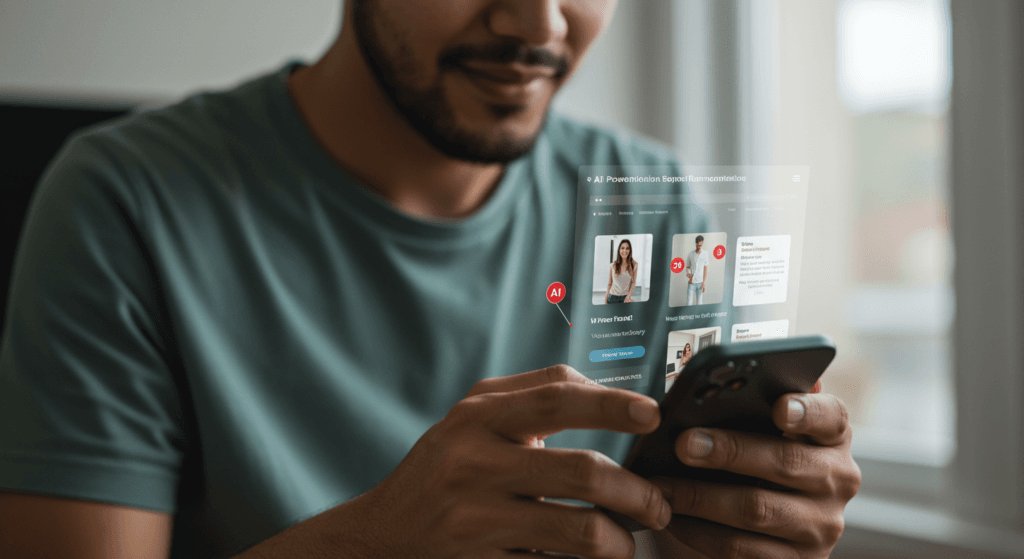
4. AI-Driven Personalization of Website Content and Design
AI is also being used to personalize website content and design, tailoring the user experience to individual preferences and needs. This can lead to increased user engagement, satisfaction, conversions, and customer loyalty.
This can be achieved through various methods, such as:
- Personalized Content Recommendations: AI algorithms can analyze user behavior, past interactions, and preferences to recommend relevant content, products, or services. For example, an e-commerce website might use AI to suggest products based on a user’s browsing history or purchase history.
- Dynamic Content Display: AI can be used to dynamically adjust the content displayed on a website based on factors like user location, device, and browsing history. A news website, for instance, might use AI to show different headlines or articles to users in different regions.
- AI-Powered Chatbots: Chatbots can provide personalized assistance to users, answering questions, providing support, and guiding them through the website. A customer service chatbot, for example, can use AI to understand user queries and provide relevant answers or solutions.
- Explore how tools like Landbot transform customer interaction through AI-driven personalization.
These AI-driven personalization techniques can significantly enhance the user experience by making websites more relevant, engaging, and user-friendly.
5. Accessibility Considerations in AI-Powered Web Design
While AI offers many benefits for web design, it’s important to consider accessibility when implementing these technologies. AI-powered tools should be designed to be inclusive and accessible to all users, including those with disabilities.
This includes:
- Alternative Text for Images: AI image recognition can be used to generate alternative text descriptions for images, making websites more accessible to users with visual impairments who rely on screen readers.
- Keyboard Navigation: AI-powered website builders should ensure that all website elements can be accessed and navigated using a keyboard, which is essential for users who cannot use a mouse.
- Screen Reader Compatibility: Websites designed with AI should be compatible with screen readers, allowing users with visual impairments to access and understand the content.
- Check out the Best WordPress AI Plugins for accessibility-focused tools.
By considering accessibility in AI-powered web design, we can ensure that these technologies benefit all users and create a more inclusive online experience.
The Impact of AI on the Role of Web Designers
The rise of AI in web design raises questions about the future role of web designers. Will AI replace human designers altogether? While AI can automate many tasks, it’s unlikely to completely replace human creativity, critical thinking, and expertise. Instead, AI is more likely to become a valuable tool for web designers, augmenting their skills and allowing them to focus on higher-level tasks.
AI can handle repetitive and time-consuming tasks, such as generating layouts, optimizing images, and creating basic content. This frees up designers to focus on more strategic and creative aspects, such as:
- User Research and Understanding: Conducting in-depth user research to understand user needs, behaviors, and preferences.
- Developing Creative Concepts: Coming up with innovative and engaging design solutions that meet user needs and business goals.
- Branding and Visual Identity: Creating a unique brand identity and visual language for websites that align with the brand’s values and target audience.
- User Experience Design: Designing intuitive and user-friendly interfaces that provide a seamless and enjoyable user experience.
- Accessibility and Inclusivity: Ensuring that websites are accessible to all users, including those with disabilities, by following accessibility guidelines and best practices.
In essence, AI is likely to transform the role of web designers from that of “creators” to “curators,” guiding the AI, refining its output, and adding their human touch to create truly exceptional websites.
Ethical Considerations in AI-Powered Web Design
While AI offers numerous benefits for web design, it’s crucial to address the ethical considerations that arise with its implementation.
One concern is the potential for bias in AI algorithms. AI models are trained on large datasets, and if these datasets reflect existing biases, the AI tools may perpetuate those biases in their design choices. This could lead to websites that are not inclusive or accessible to all users.
Another concern is the potential for job displacement. As AI automates more web design tasks, there is a risk that some jobs currently performed by human designers may be automated. This highlights the need for web designers to adapt their skills and embrace AI as a tool that can enhance their work rather than replace it.
Furthermore, there are broader ethical considerations related to data privacy and the responsible use of AI. Web designers need to be mindful of how AI tools collect and use user data, ensuring that they comply with privacy regulations and ethical guidelines.
By addressing these ethical considerations, we can ensure that AI-powered web design is used responsibly and benefits all users.
Dive into the ethical dimensions of AI in Exploring AI Plugins for WordPress.

Ready to Take the Leap?
Still not convinced? Here’s what one content creator had to say about their experience with AI:
“As a freelance writer, I’m always looking for ways to be more efficient. AI has been a game-changer for me. I can generate ideas faster, write more compelling content, and optimize my work for search engines. It’s like having a personal assistant for my creative process!” – Alex K., Freelance Writer and Content Creator
Ready to explore the world of AI? There are tons of resources available to help you get started. Check out these popular AI tools designed for website creation, content generation, and online marketing:
- Wix ADI: An AI-powered website builder that creates stunning websites in minutes.
- Durable: Generates entire websites with images and copy based on simple prompts.
- Framer: An AI-driven design tool that helps you create professional-looking websites.
- Khroma: Uses AI to learn your color preferences and generate stunning color palettes.
- ColorMind: Creates harmonious color palettes based on your input and design trends.
- Coolors: Generates unique color palettes and provides colorblind-friendly options.
- Jasper: An AI writing assistant that helps you create various types of content, from blog posts to marketing copy.
- Copy.ai: An AI-powered copywriting tool that generates high-quality copy for websites, ads, and social media.
- SurferSEO: An AI-driven SEO tool that helps you optimize your content for search engines.
- MarketMuse: An AI content planning and optimization platform that helps you create content that ranks well in search results.
- HubSpot: A marketing automation platform that uses AI to personalize campaigns and improve marketing performance.
- Salesforce Einstein: An AI-powered CRM platform that helps you personalize customer interactions and improve sales performance.
Ready to explore the future? Check out Enhancing Website Functionality with AI Plugins for actionable insights.
This is just a glimpse into the exciting possibilities of AI. From automating tedious tasks to unlocking creative potential, AI can be your copilot for success in the digital world. So, why not give it a try? You might be surprised at what you can achieve!
